DE | ENG
DESCENT.EXE
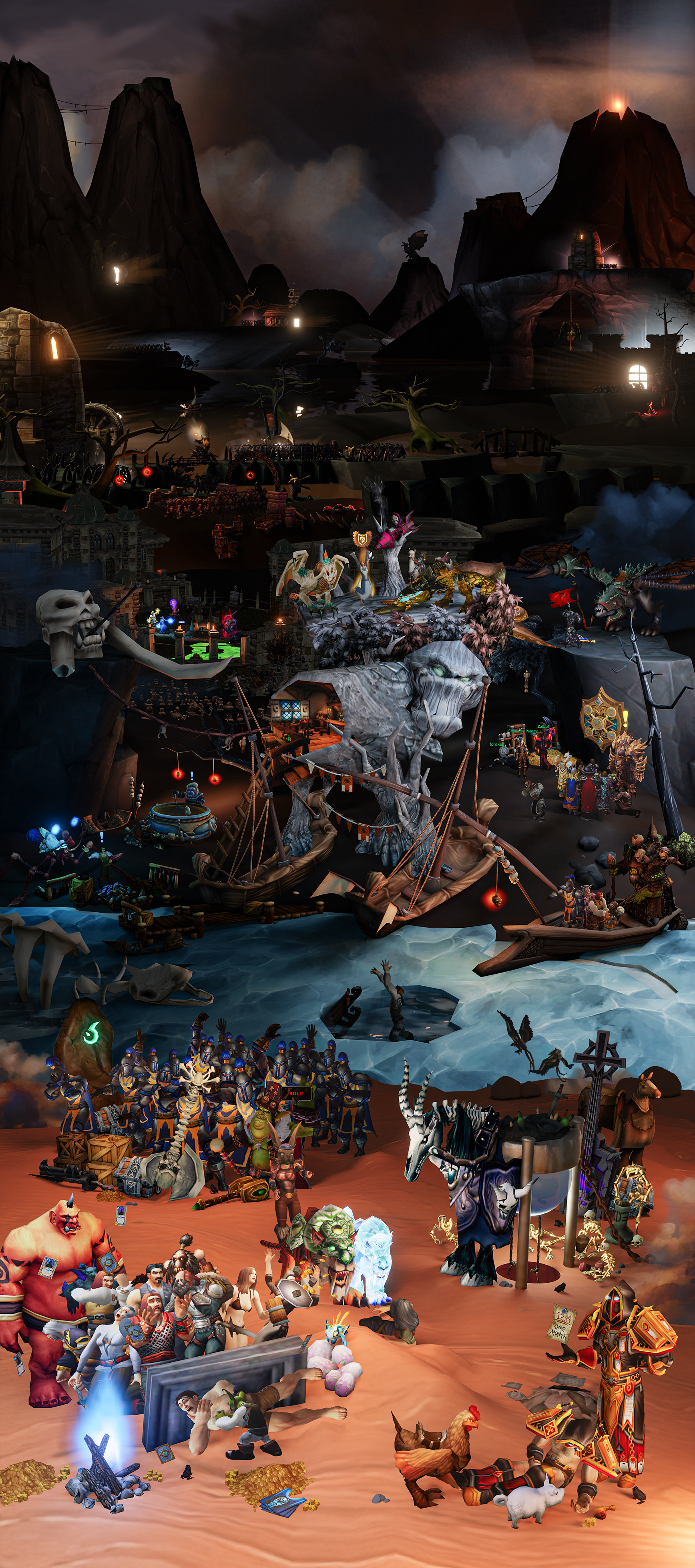
My bachelor thesis translates a classical painting by Hieronymus Bosch and with this website I offer the viewers an access into technique and working method, as well as the content design and intellectual implementation of my work.
Furthermore it is important for me to describe in how far the original painting "The Garden of Earthly Delights" by Hieronymus Bosch was adopted in my project and what is assumed as interpretation of the original.
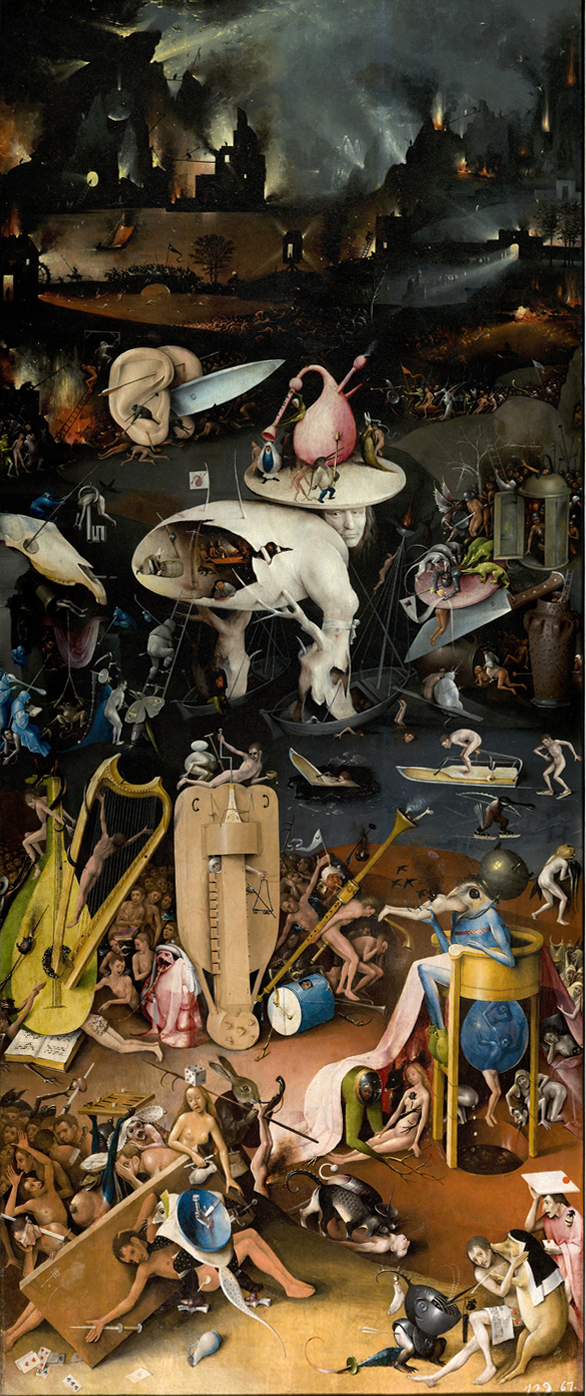
Source: Wikipedia - The Garden of Earthly Delights
I chose to recreate the right panel - which illustrates hell - of Bosch's "The Garden of Earthly Delights" triptych because the hidden-object nature of the painting motivates viewers to discover the many details, all of which have been given their own - or intended - interpretation. The suction effect of the painting was a crucial point of my decision, since a similar effect emanates from online games, in this case World Of Warcraft (WoW). I have also retained the format of the right panel of the original (97.5 x 220 cm). Thereby I want to enable the viewer an observation of the events in the picture similar to the original painting.
Since I dealt with the topic of internet gaming disorder in my thesis using WoW as an example, I present everything in this project with 3D objects and screenshots from the game. Since Bosch's painting is about the sins of mankind, I have translated the meanings found in the original to the subject of online gambling addiction. The things that can be decisive factors for gaming addiction are depicted. So, in part, compositions are adopted to remind of the original, however, the meaning is somewhat changed, or the meaning is completely different.
Part I: The Judgement
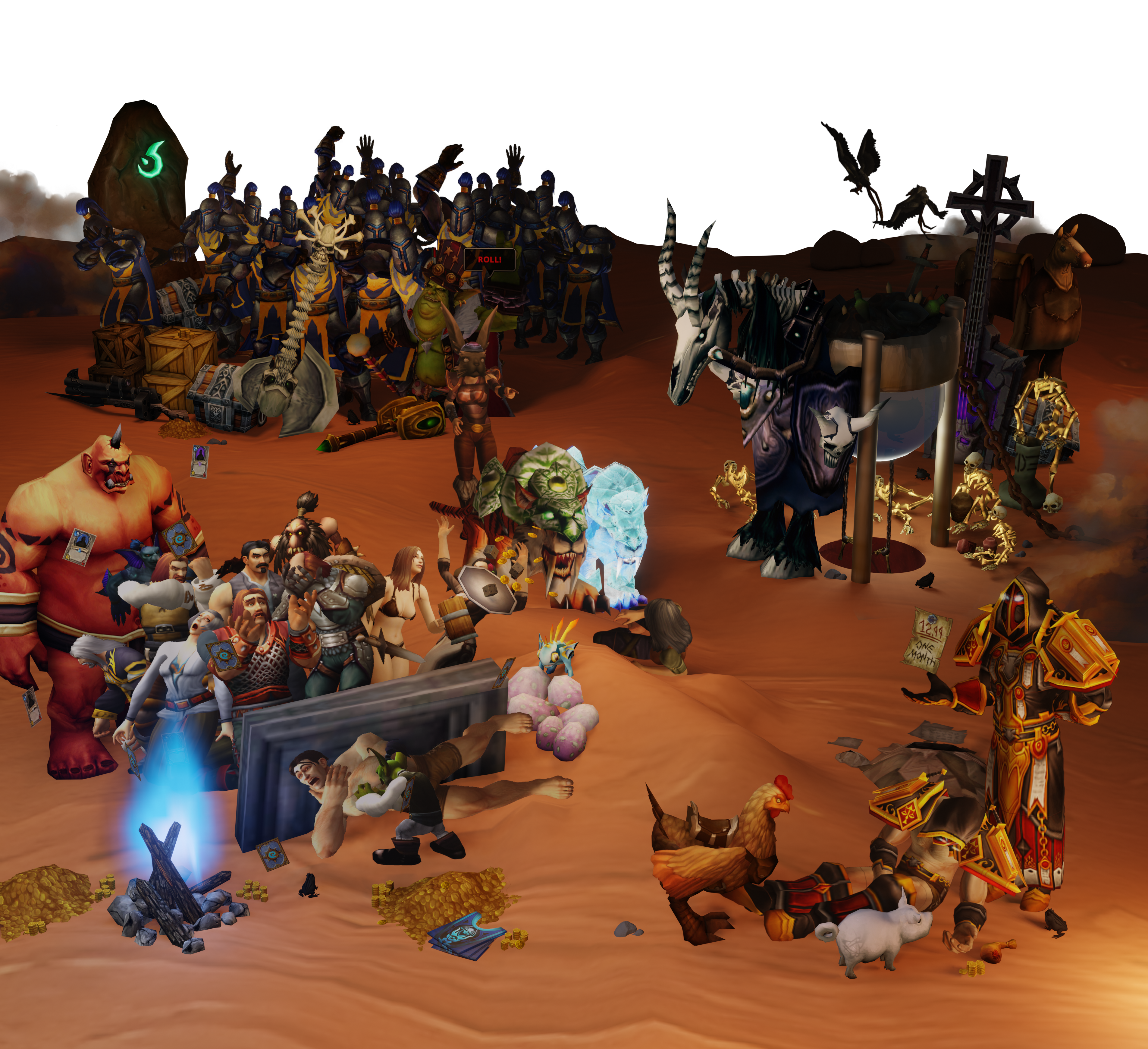
In the left foreground the characters are supposed to represent people who spend their real money on items or gambling and gold. This is possible on the one hand by buying gold directly, or by acquiring "trading cards" that are no longer available on the market. On these cards are codes that can be redeemed in the game to get rare items. These codes are traded on the Internet for up to several thousand dollars. Some of the most expensive items are pictured here. (Grim Campfire $200; Tabard of Frost $1200; Murky Pet $6995; Carved Ogre Idol $995; Magic Rooster Mount $2295).
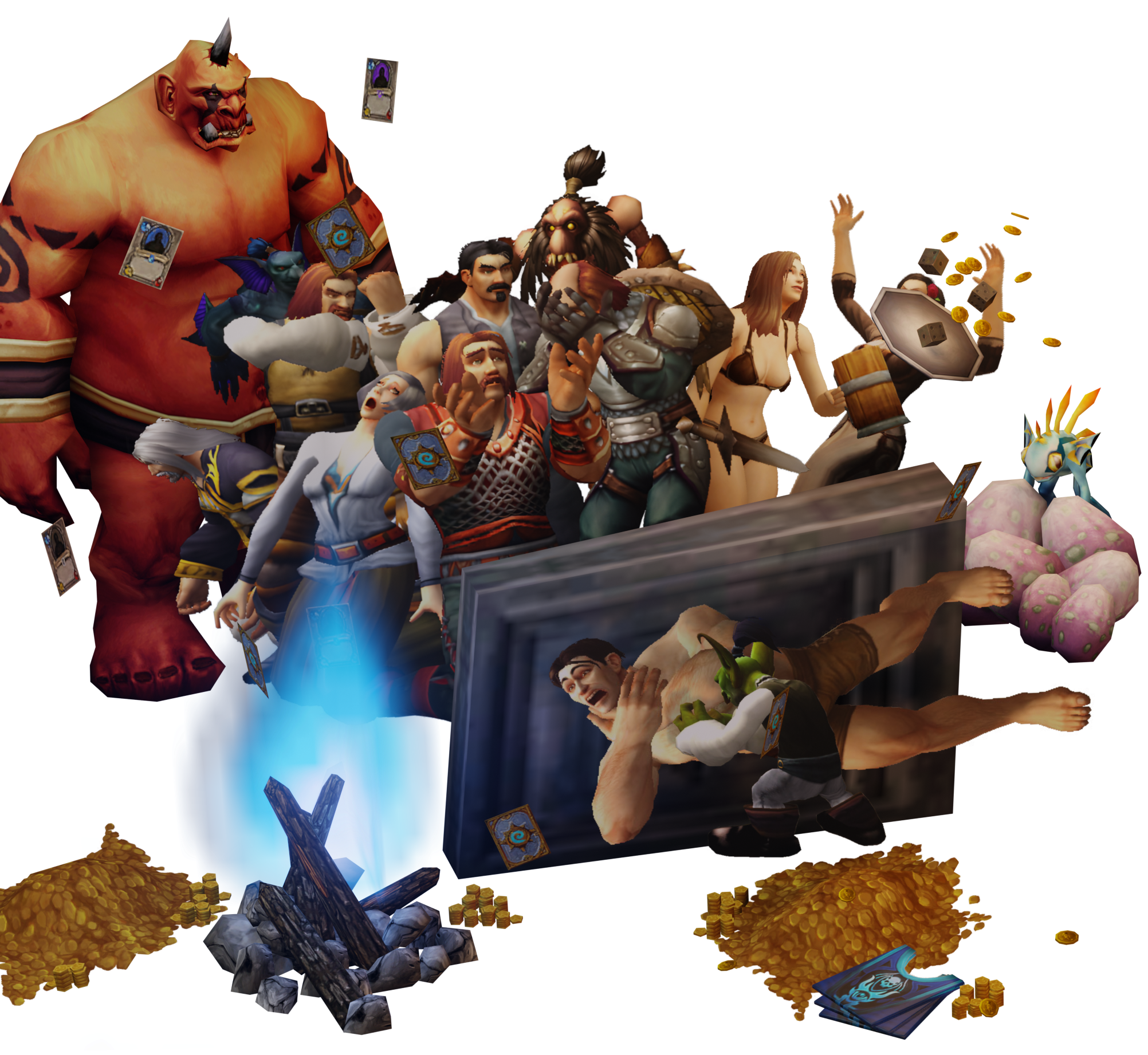
You can also see a gambler who is stripped of his last gold coins, similar to the original.
The gambling is also represented by dice, as the game allows the command /roll, which rolls a random number from 1 to 100. If one decides to roll against a player for gold, this is called "deathrolling", where dice are rolled from 100 down until it goes no lower.
For Example:
Player 1: /roll 100 - rolled: 12
Player 2: /roll 12 - rolled: 2
Player 1: /roll 2 - rolled: 1 -> win
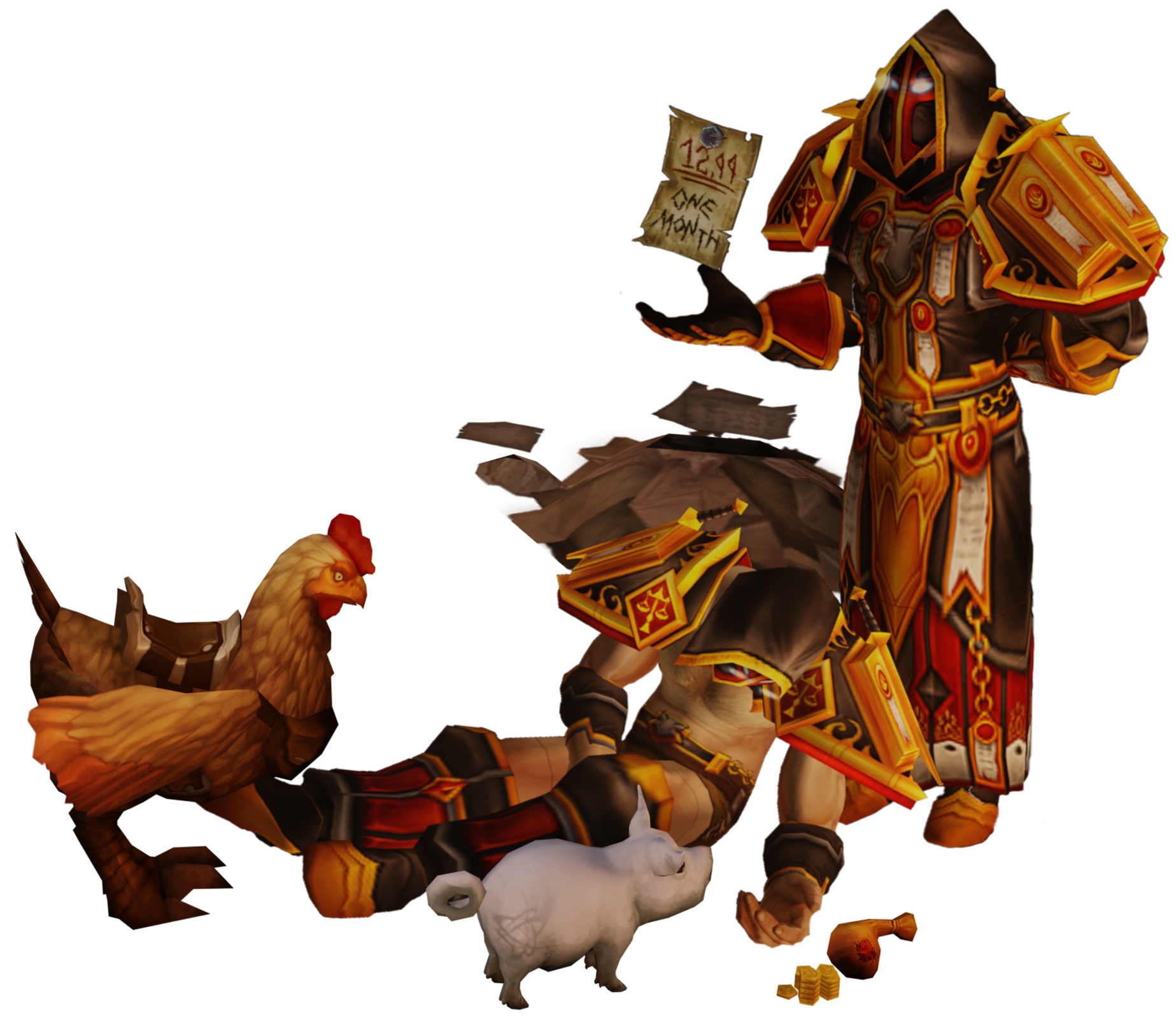
The "sale of the soul" to the demon disguised as a nun depicted in the original is here represented as a character missing some parts of a full equipment set lying "defeated" on the floor in front of a fully equipped character.
The equipped character here represents what the other character could be if he continues to subscribe for game time. By paying 12,99€, the player could get up to 4 more chances to get the missing items. The pig here is taken from the original in such a way that it is not a demon dressing up as a nun, but represents the company "Blizzard". Hence the branded logo of the game launcher "Battle.net" which is needed to play WoW.
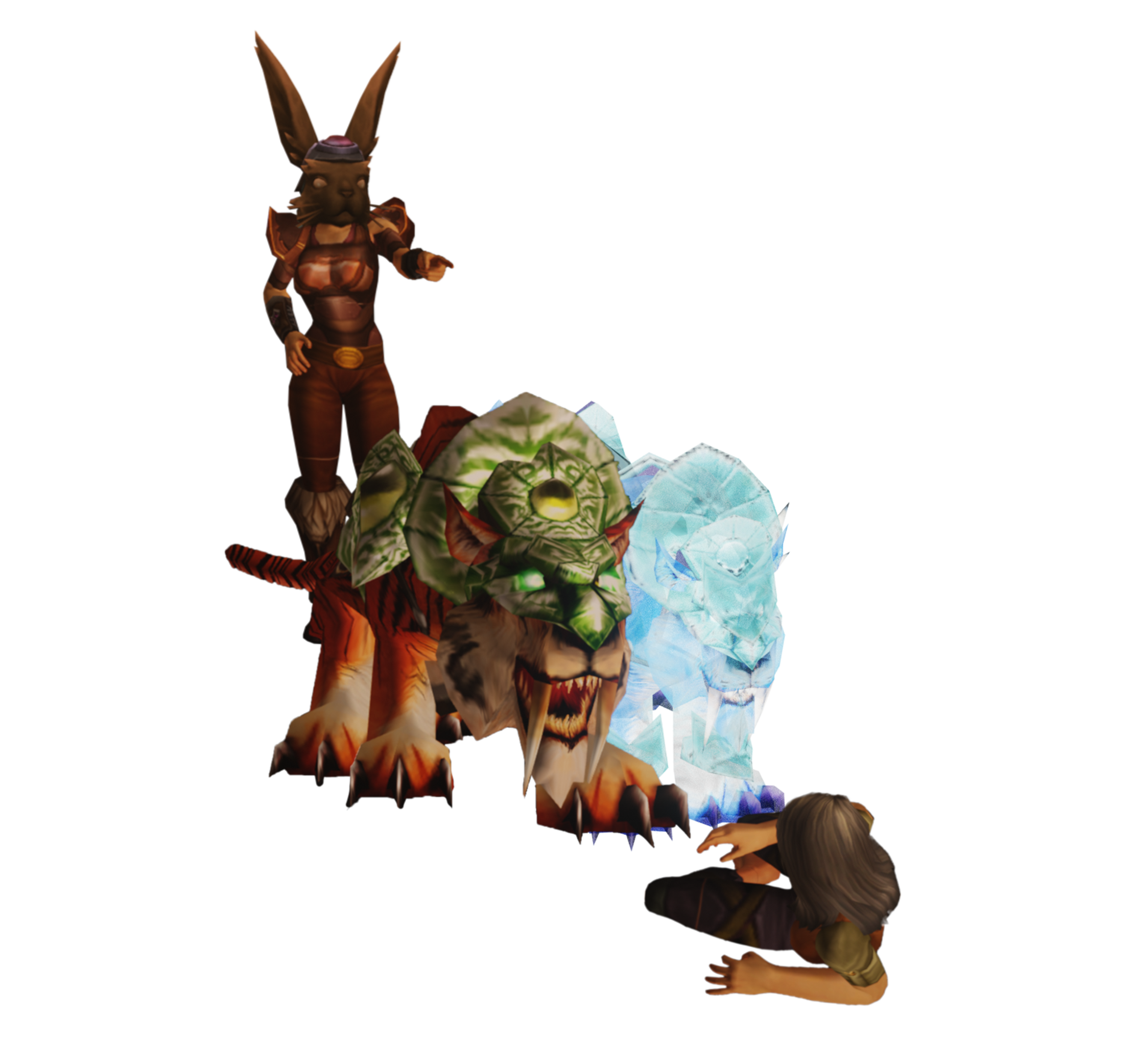
In the middle you can see two tigers chasing a player. The spectral tiger can only be obtained through trading card codes, which start at around $4750. The other tiger can no longer be obtained the original way, by defeating a boss, but only through a lot of luck and vast amounts of gold in the in-game Black Market. The huntress who commands the mounts has the head of a mount that can be purchased for 20€ in the Battle.net store.
The roles are reversed here, as the player is not hunting the tigers, but the mounts are hunting the player. The desire for as many mounts as possible is a reason for many to continue playing, even if the endless mount farming is no longer fun for them.
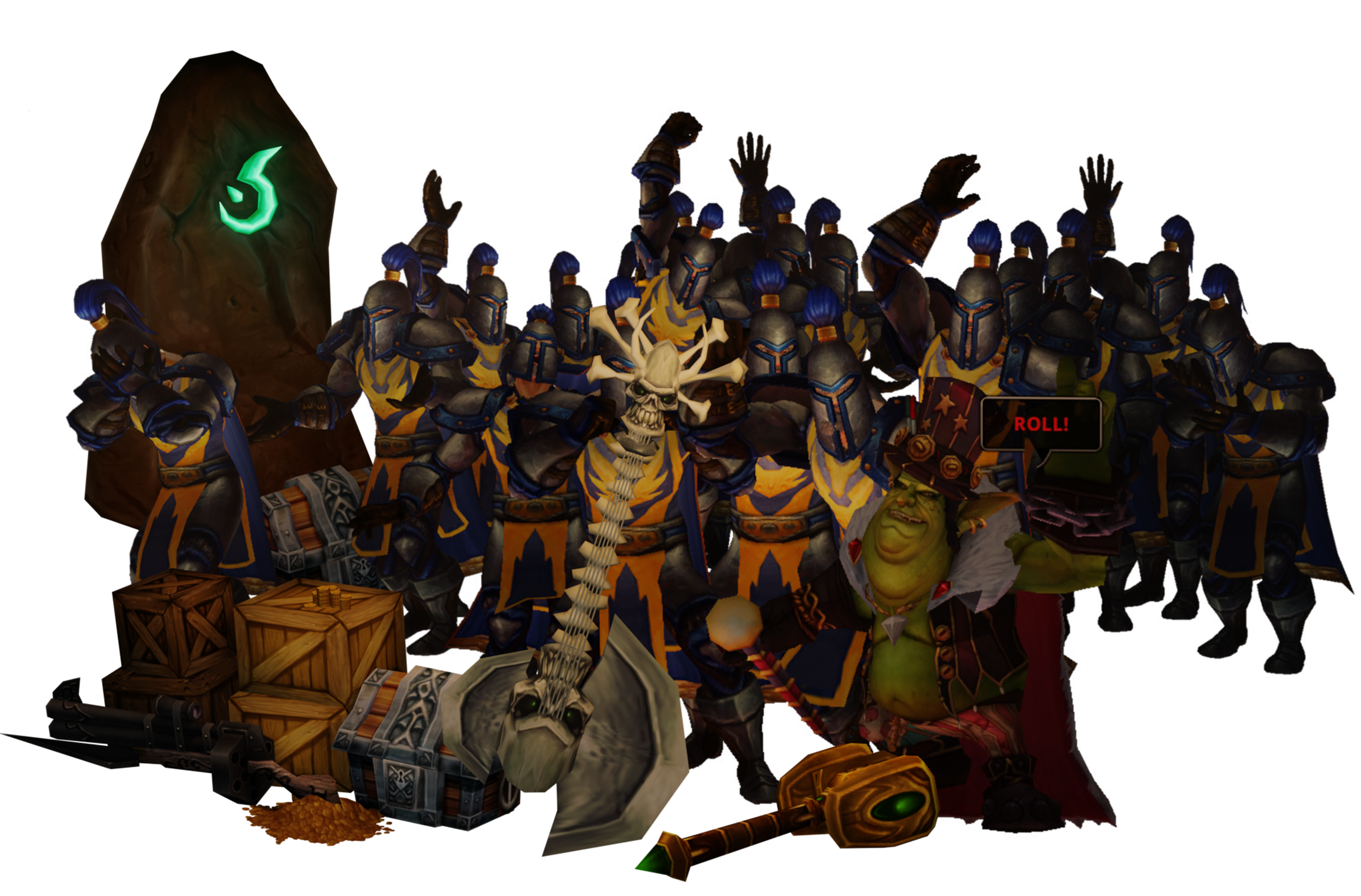
A "raid", a group of many players fighting together for equipment, is shown here. The weapon (or guitar) shown here is an in-game drop that can only be obtained once each week by a group of 10-20 players. Here I want to show the aspect of the regular commitment to games that some players make.
You can see a guild master who commands the players in the group to roll dice for all the items they grabed during the raid (random number from 1-100, highest number wins).

Here is deliberately shown my own interpretation. The original shows an owl, or the "prince of hell", eating people and transporting them directly into the sewers below. It also depicts the 7 deadly sins, which I don't think play a big role in the online game or internet gaming addiction.
Since I had to think directly of an hourglass when looking at the original, I wanted to pick up the aspect of "farming" in the online game. Farming means as much as pursuing an activity for a long time in order to obtain a rare item or mount. Unlike the items that can be paid for with real currency, the items shown can only be obtained through a lot of play time and luck.
One of the rarest mounts (0.1% drop chance) in WoW is placed in a way it merges with an hourglass. The hourglass illustrates the amount of time spent, the skeletons represent the people who have had no luck so far and have been trying to get the mount for years.
Behind the skeletons you can see a guitar resembling a tombstone, which in the game is a weapon that can only be obtained at certain times of the month. Behind it a Halloween costume, which is sold only around October 31st.
Part II: The Crossing
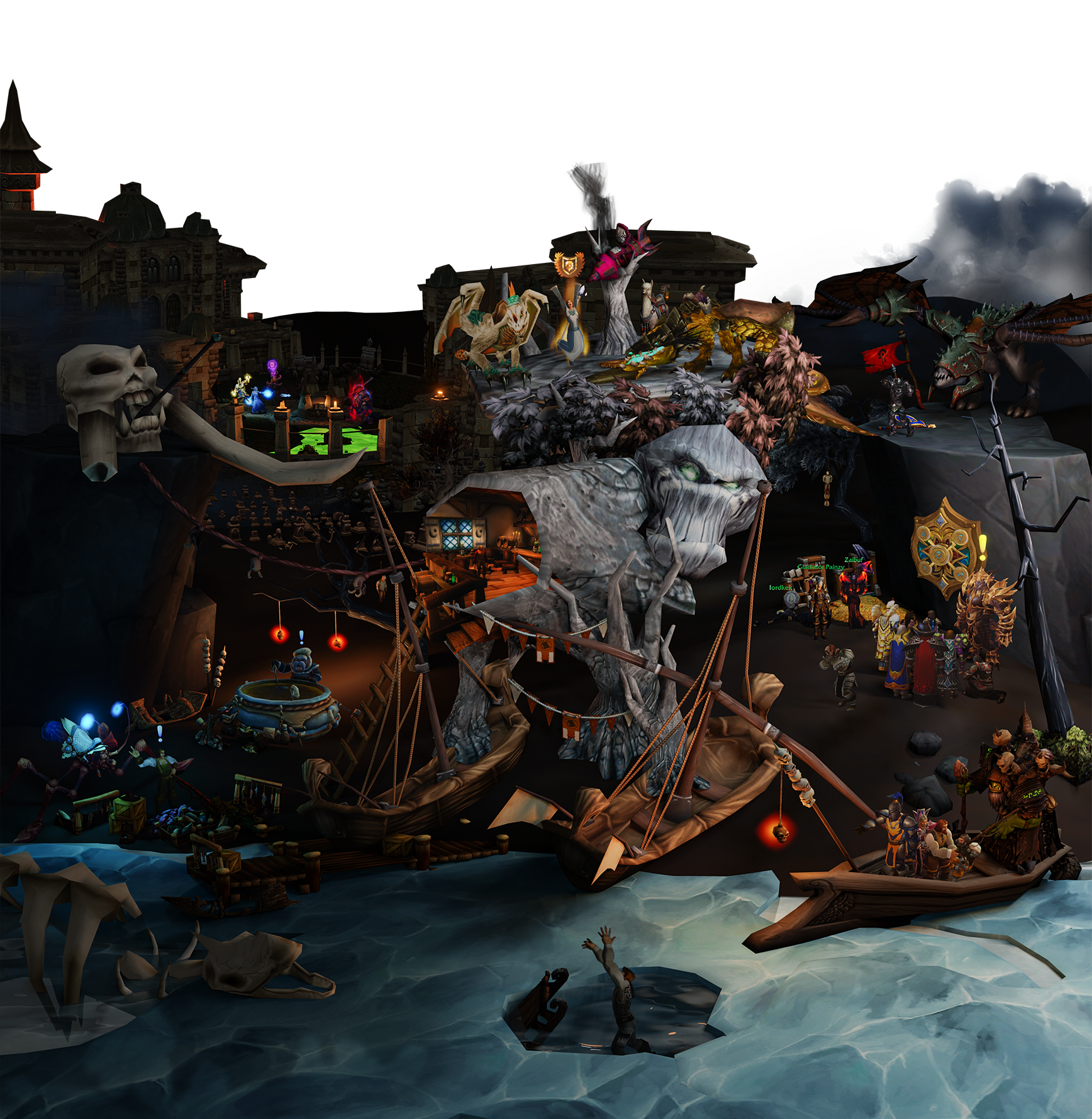
The further you wander into the background of the image, the more the image serves your own interpretation. On the one hand, I want to leave room for interpretation and represent personal experiences in the picture, on the other hand, I am guided by the original, of which, unfortunately, there are no longer any records on the meaning of what is depicted. The centered "tree man" is thus the last clue to the painting of Bosch, since I want to reach the eye-catcher in the middle of the picture and thus clarify the reference to the original one last time.
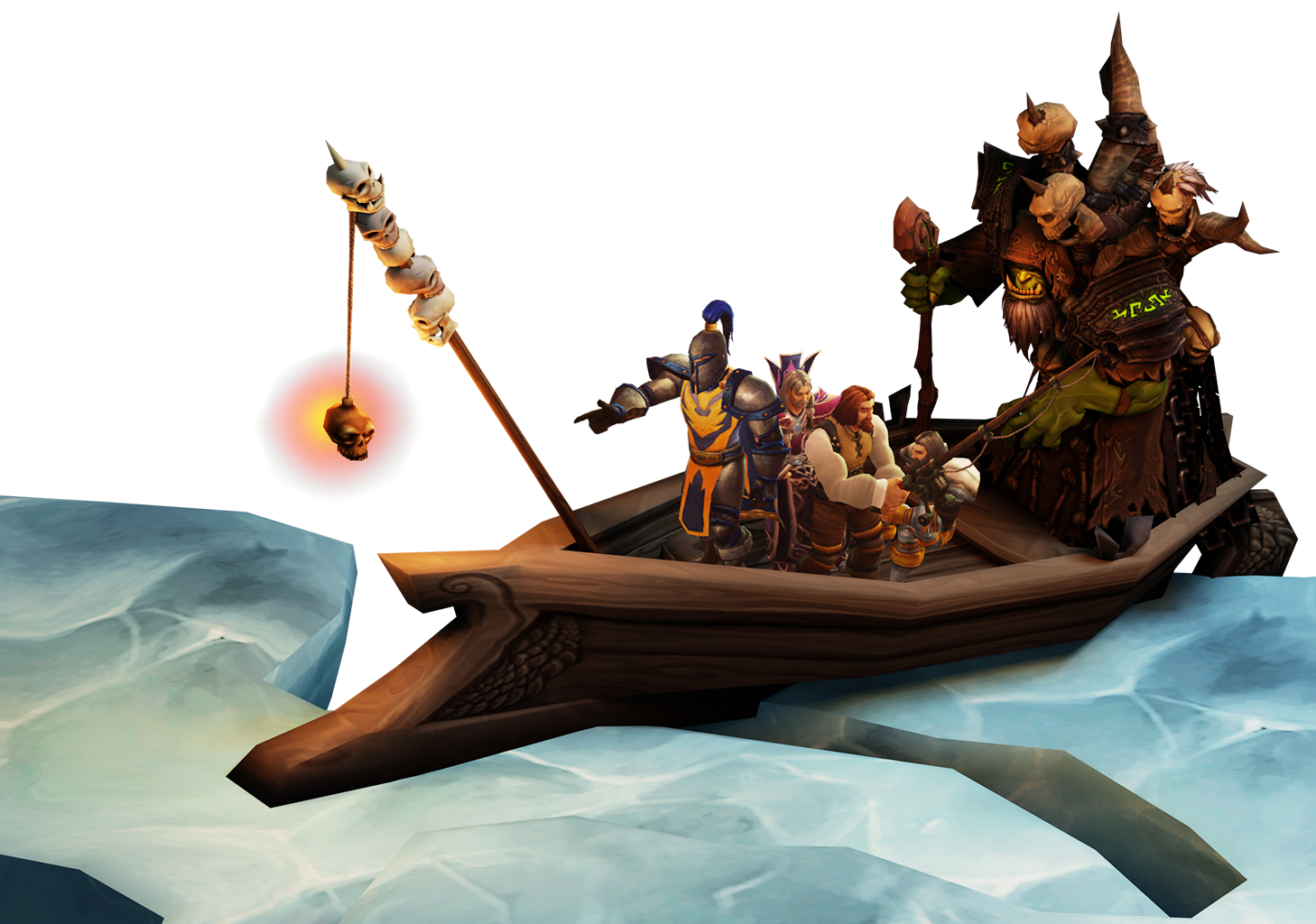
In the middle ground of the image, the crossing to the front part of hell, across the icy river is depicted. Behind the river are activities in the game that can lead players into addiction.
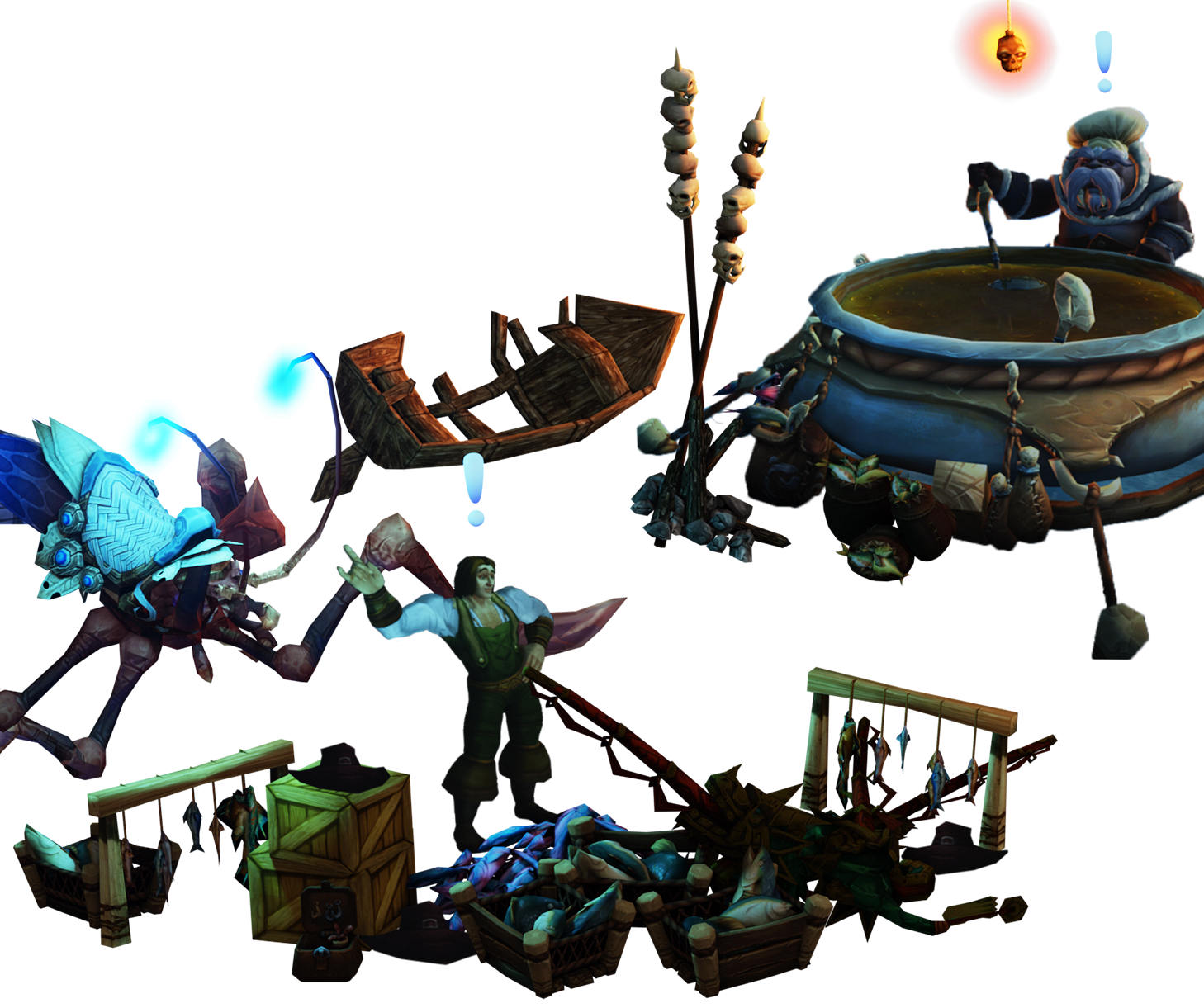
For example, "daily quests" can be seen here, which should also be completed every day for maximum efficiency. Through the daily quests, players get items, such as fishing rods shown here, cosmetic hats or reputation with factions, which seems important for many. They are indicated by the blue exclamation mark above the non playable characters (NPCs) heads in the game.
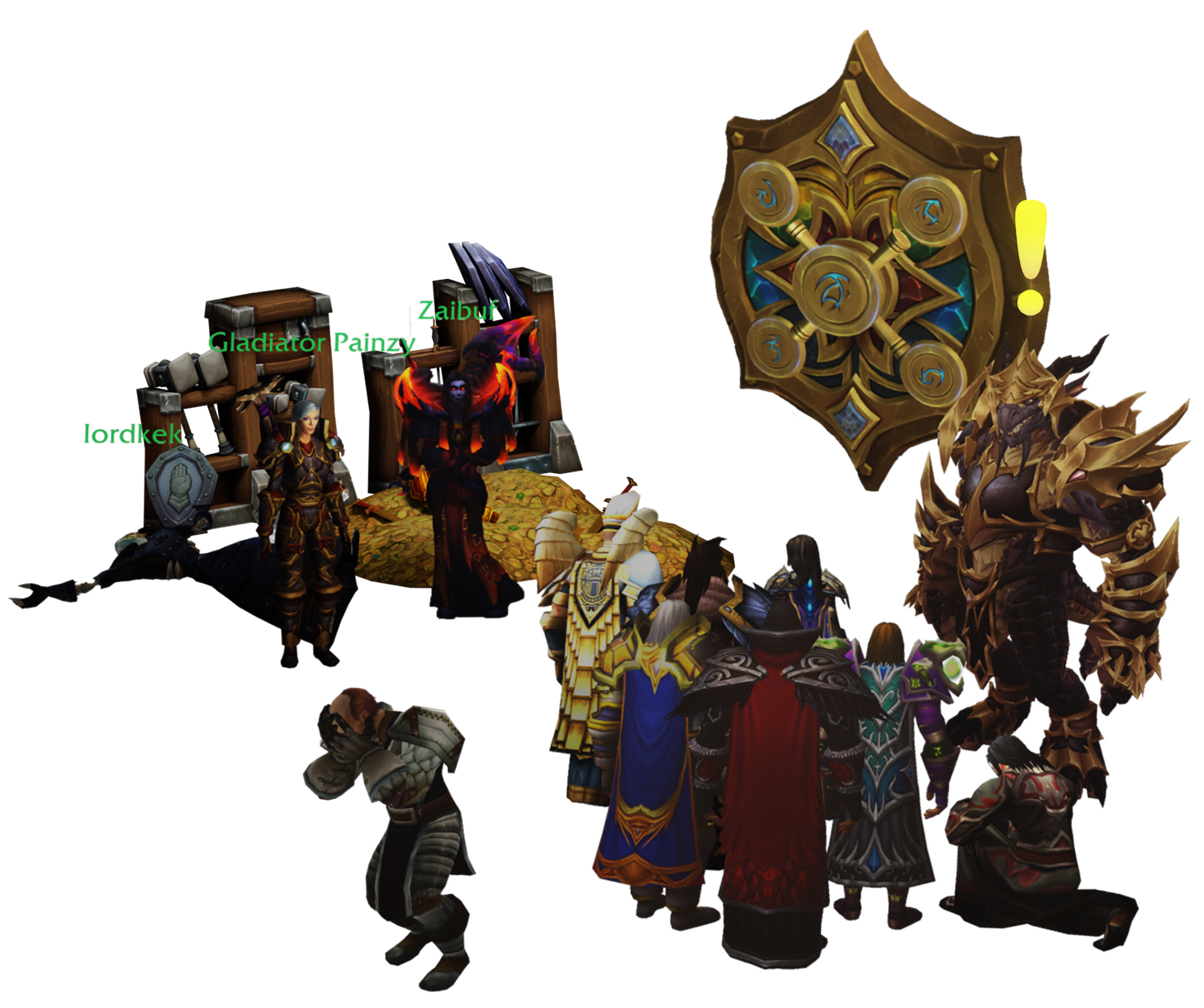
Every week there is also a chance - after completing certain activities, like quests that are indicated by a yellow exclamation mark - to open a vault. For many players, this is a reason to invest time in the activities in order to grab better rewards.
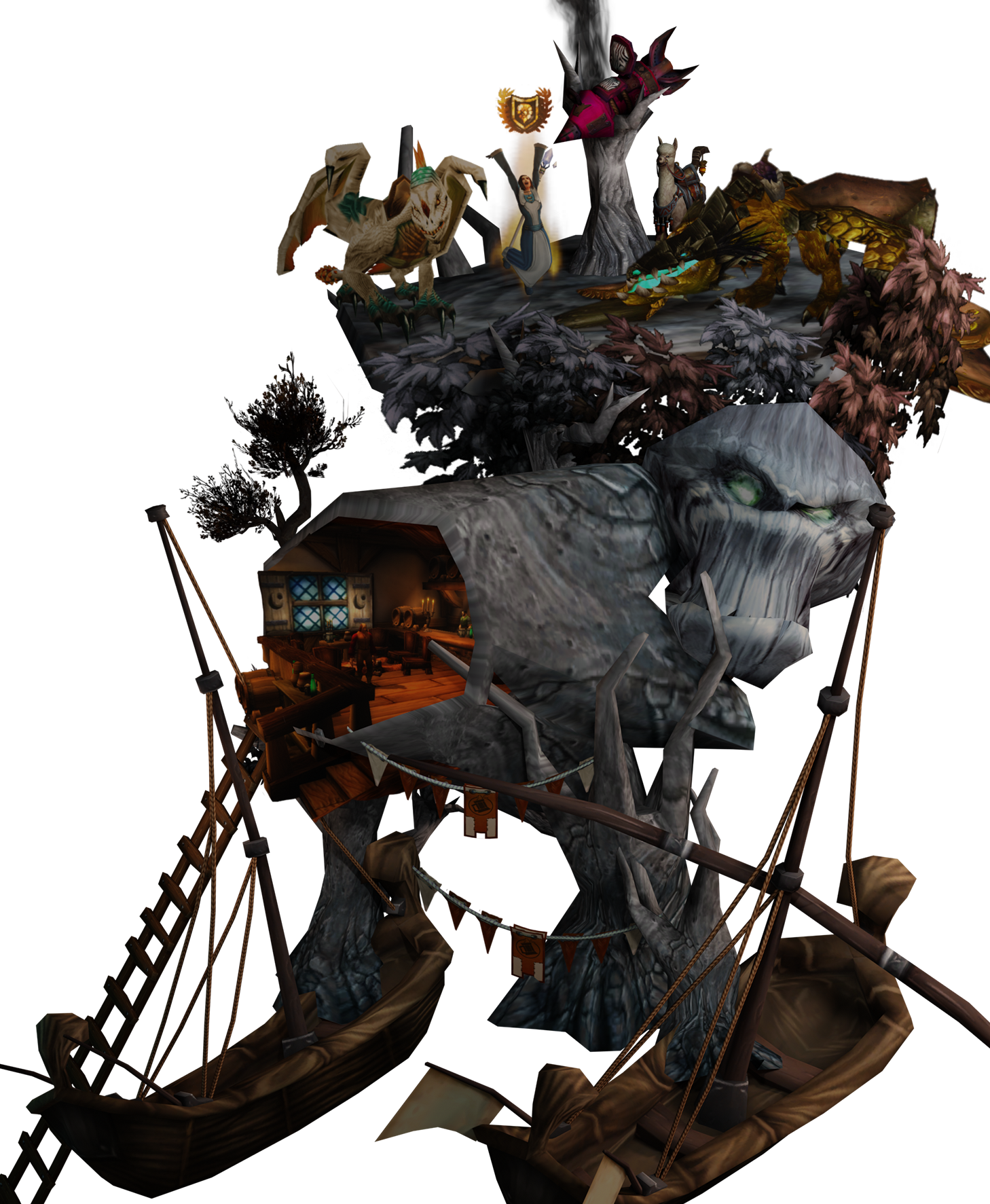
In the center is a tree composition showing a well-known inn, which for some players is the entry point to roleplay, investing many game hours in character development and communication with other players. Above it, you can see a player collecting achievement points, which are especially important for players striving for completion. This includes rare mounts, such as dragons or alpaccas.
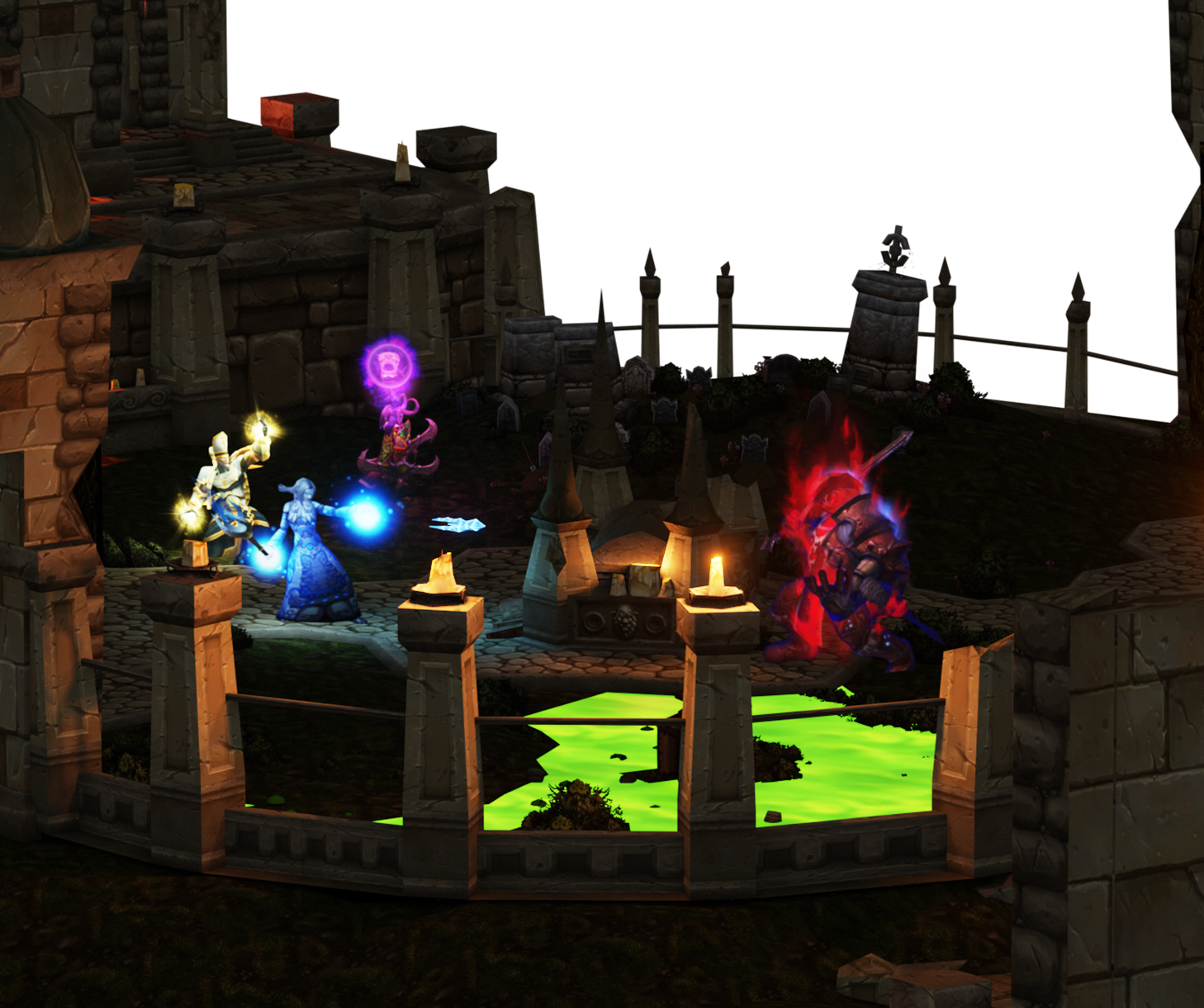
On the right and left is depicted the player versus player (PvP) aspect of the game, where players fight each other to gain honor and PvP related items, like gear or mounts. The biggest part of the PvP has to be the fights in an arena, where teams of two to three people fight each other.
Part III: The Descent
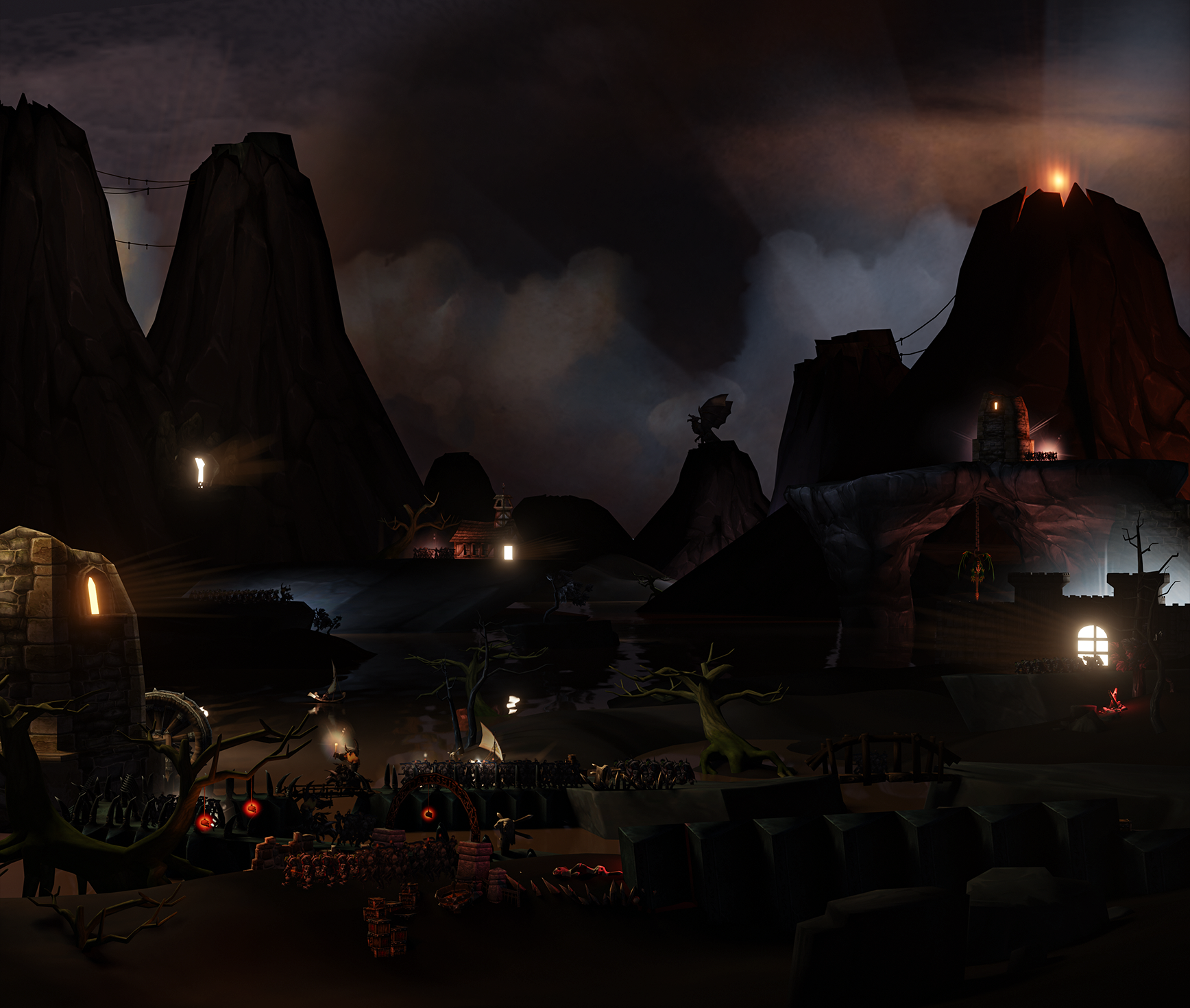
This is the part of the image, where not many interpretations are available, since there are no notes from Bosch. It's up to the viewer to try and find a meaning behind the background. The idea is to show the "entrance" to hell, where you can see groups of people running through dungeons and fighting monsters. You could say it's the the first experiences with the game, that keep you engaged.
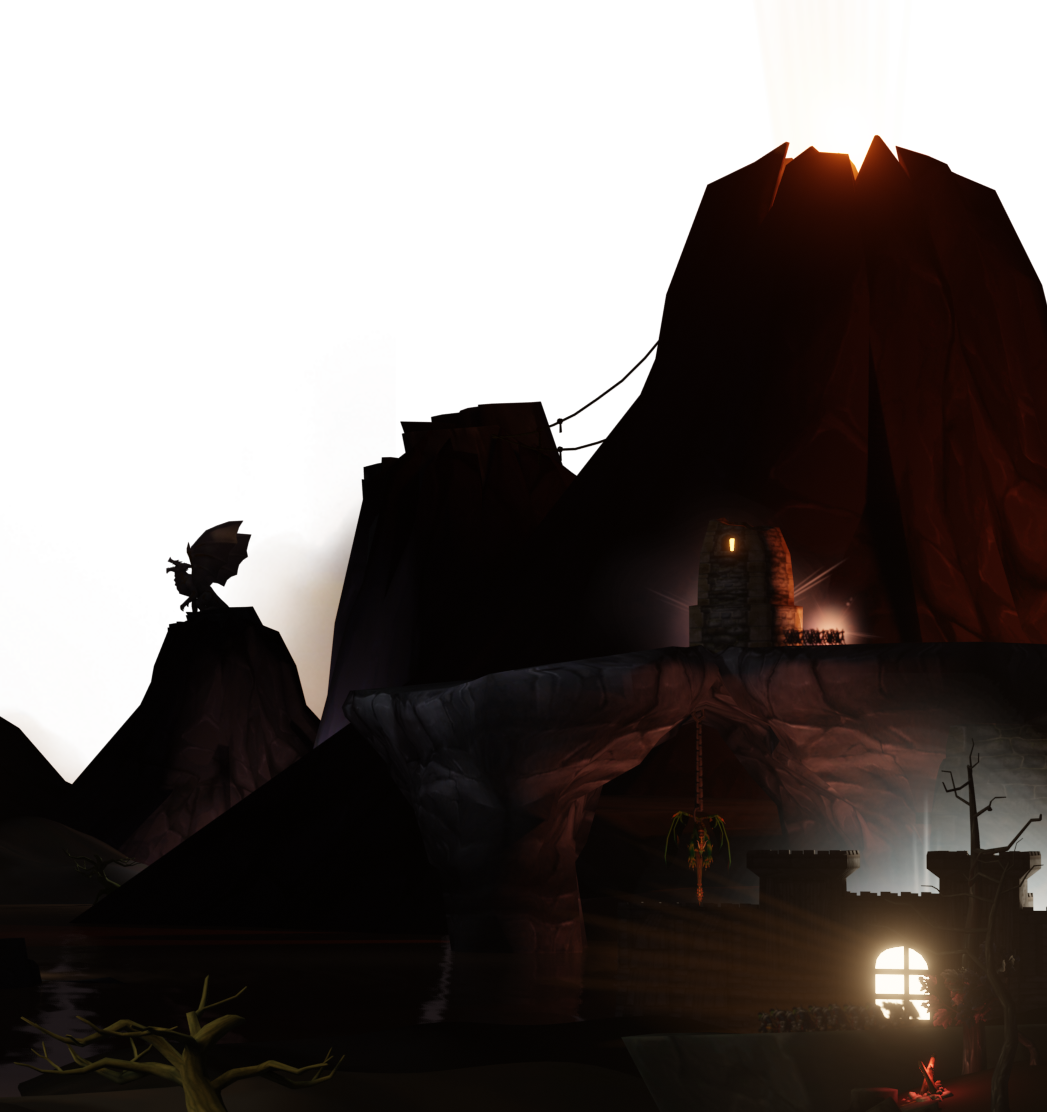
You can see here the entrances and exits of dungeons from the game and the masses of players who rush into the online world. Dungeons are instances in which a group of five players fights against strong enemies that can't be defeated alone. On the one hand, since dungeons are important for gaining experience with one's character, they also offer improved items that strengthen the character. Each dungeon is filled with bosses, so I present them here as living and defeated dragons.
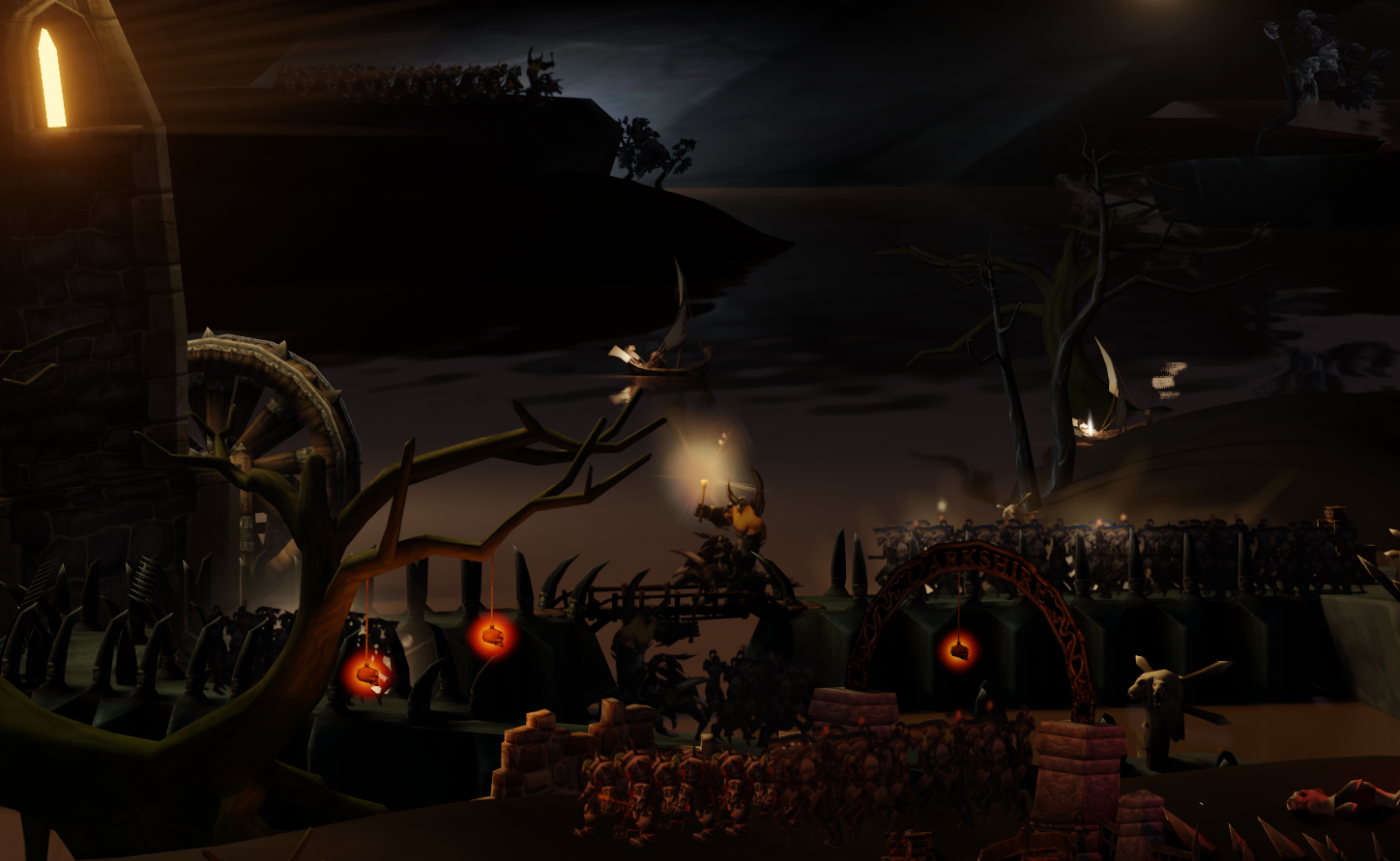
Here, the path to the front part of the image is shown, which indicates that not the entire mass of gamers falls prey to addiction. On the way from the back to the front part, the players are sorted out, so to speak, who run the risk of becoming addicted to the online game due to the activities presented.
Behind the Scenes
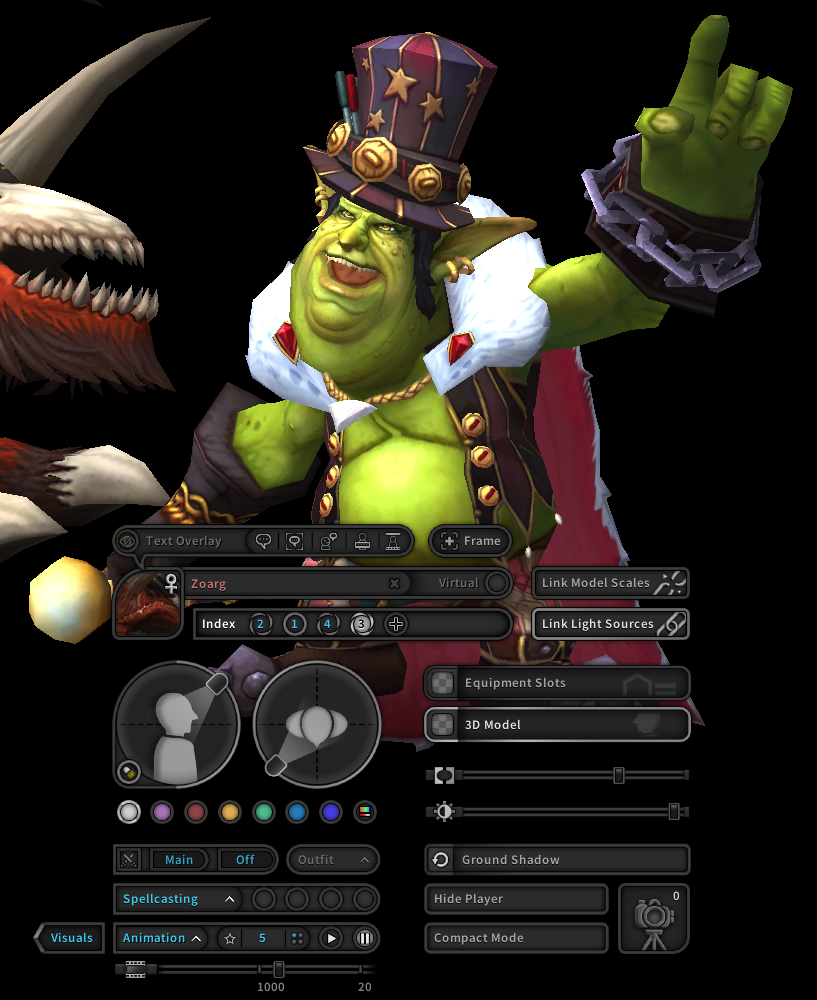
The creation of the image was mainly built in such a way that I implemented a large part of the characters with the help of a program (add-on) in the game. The add-on accesses all characters that cannot be controlled by the player. So you place the characters that are needed in the game and the add-on takes several screenshots to simplify the cropping. In the process, you choose from about 300 animations that can be paused to bring some life to the characters.
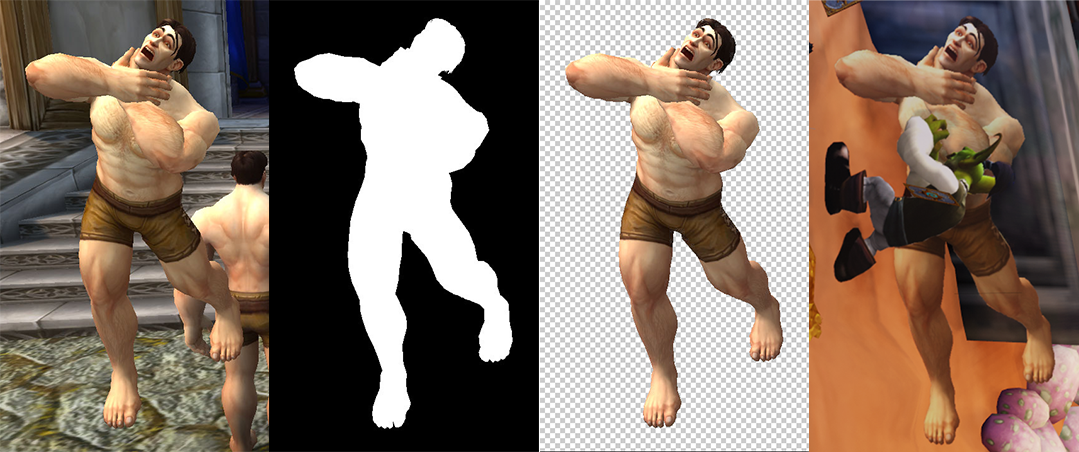
Using the example of the gambler:
First the character is animated in the game (here the animation "drowning"), then a screenshot and a mask are created, then the screenshot is cropped and placed in the 3D software.
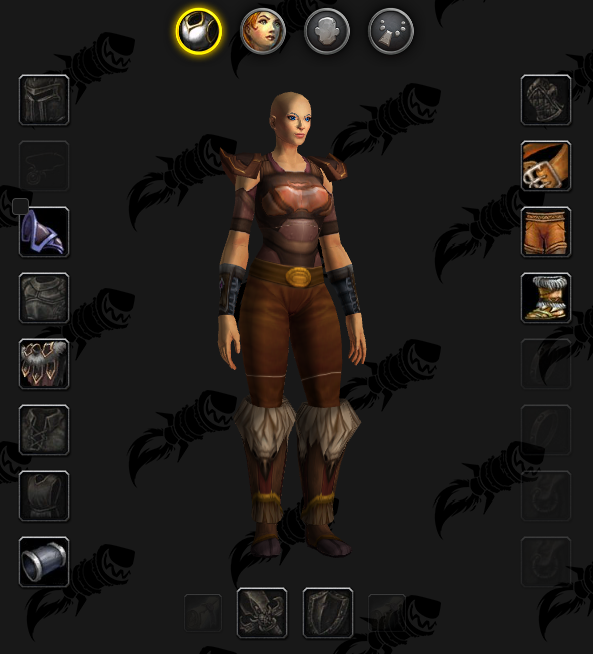
Since the add-on shown above does not allow custom characters, I used an alternative tool that allows characters to be designed and equipped as desired. The only downside was that all screenshots had to be manually cropped. If the perspective didn't fit, a new screenshot had to be taken and cropped.

So after the cropping process, I placed the screenshots of the characters in the 3D software as 2D images and arranged them into a collage.
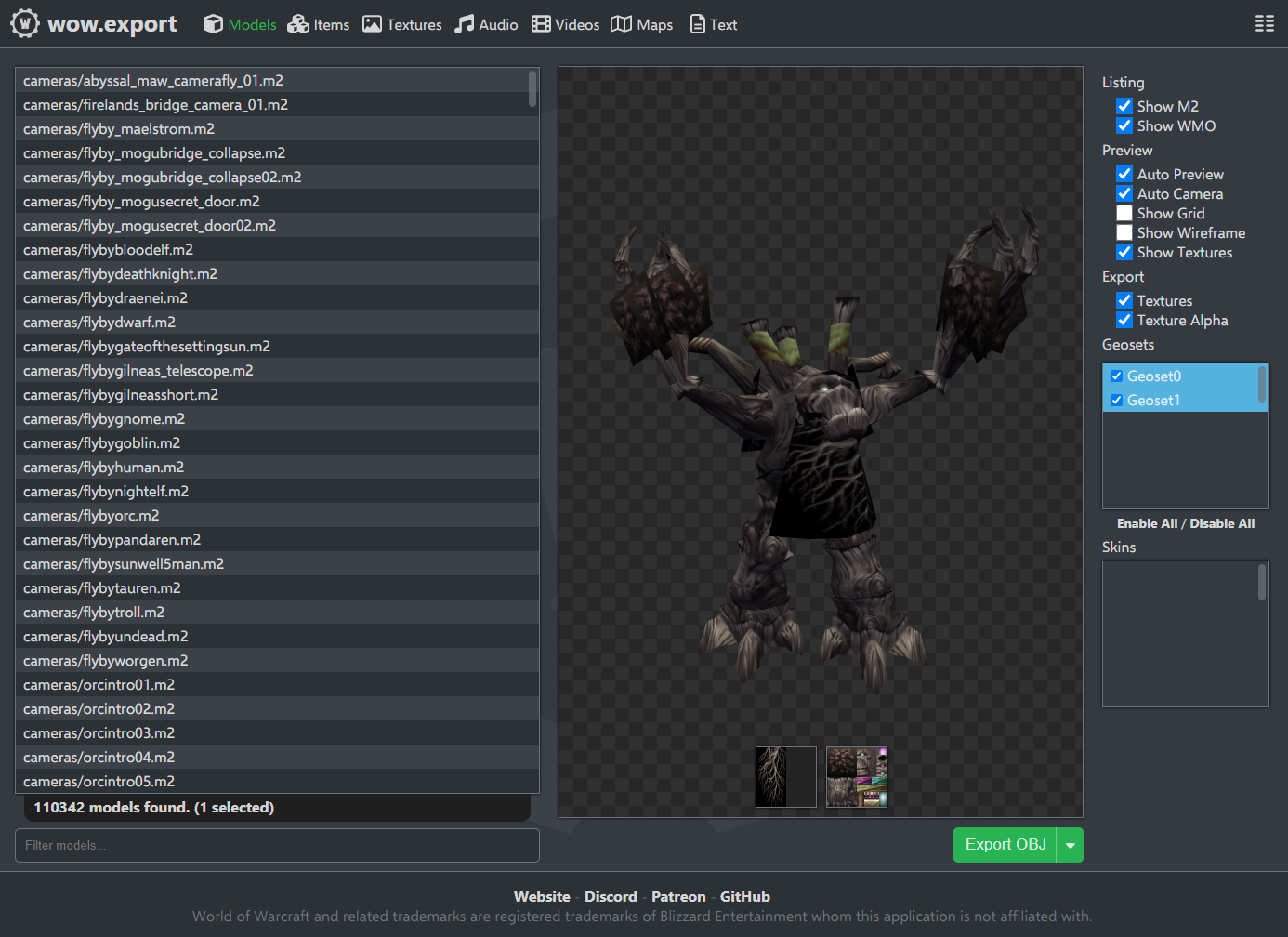
The 3D objects that can be discovered in the picture were all exported using another program that accesses the games database and has access to all the objects (about 110,000 of them) in the game. These are all the remaining objects, mountains, towers and trees. They were exported as 3D objects to place them in the 3D software. Partially I also edited them, like for example the tree-man in the middle of the picture, which is composed of several objects.
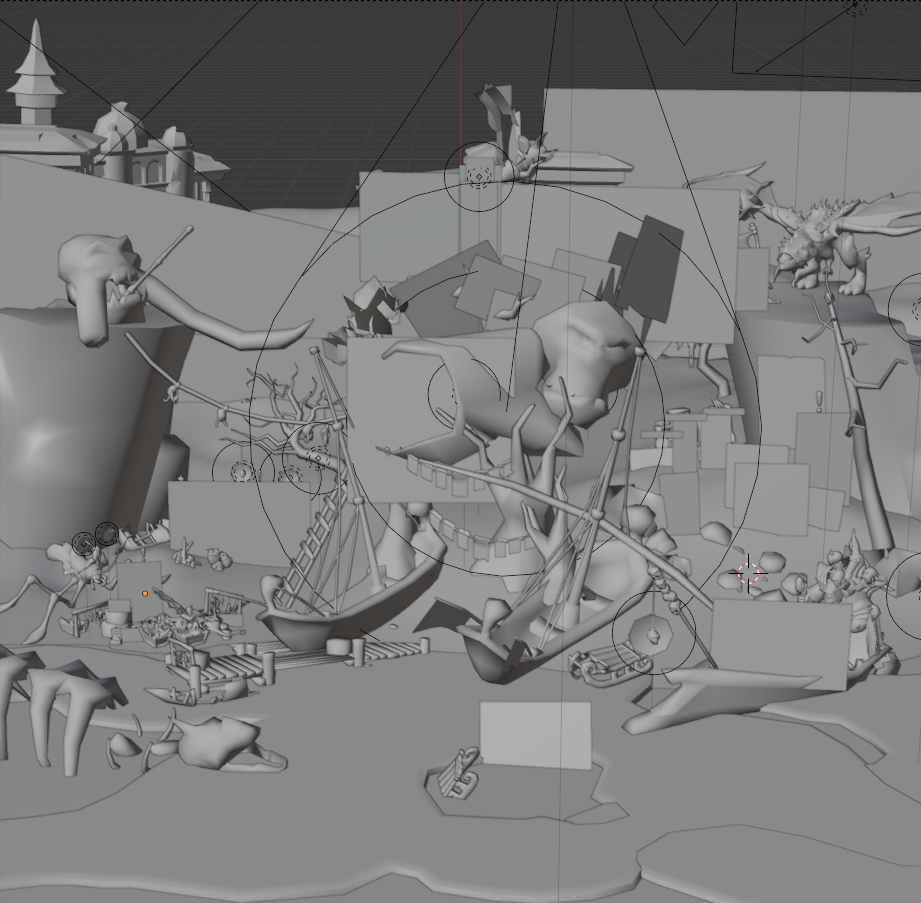
This approach was time consuming, but it was important to me to use only objects and characters from the game, with a few exceptions.
In the end, I rendered the foreground, middle ground, and background individually and merged them into the final image.
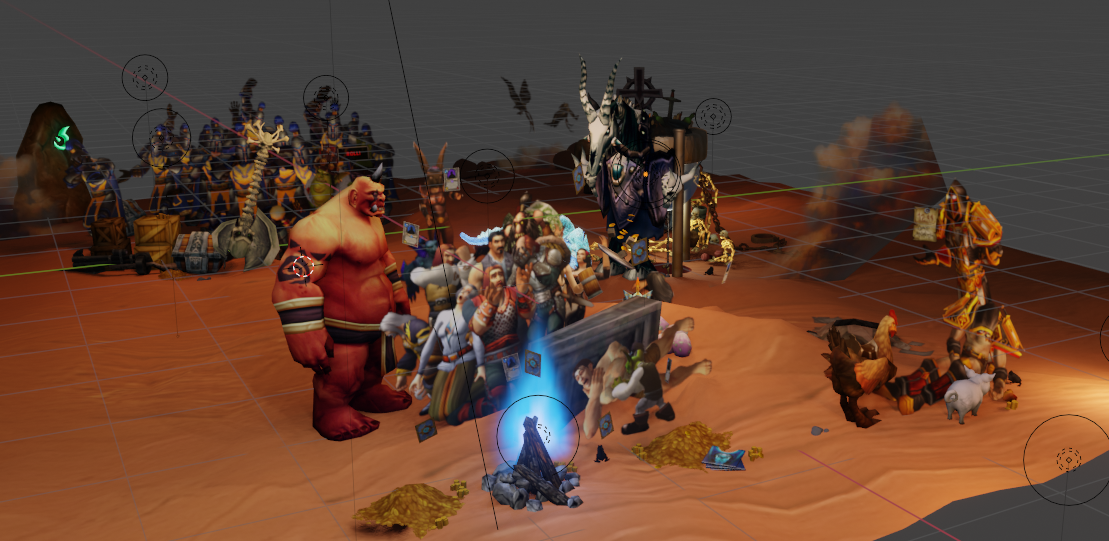
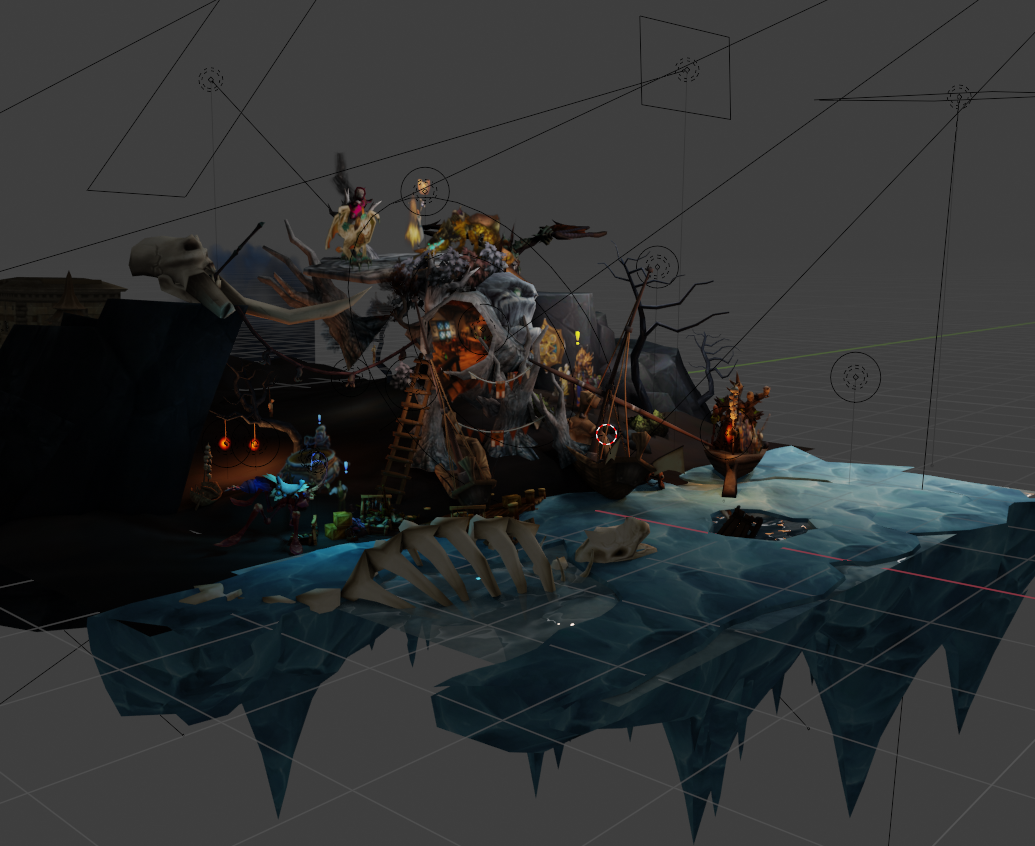
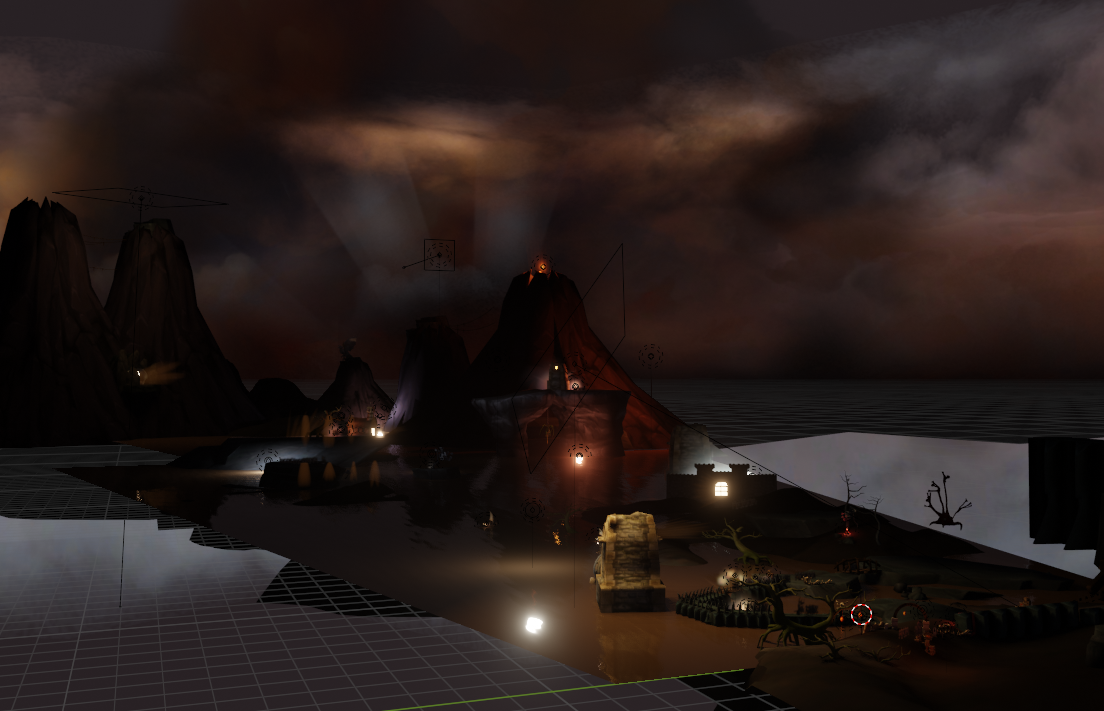
If you are still here, I want to thank you for your interest in my final project at Merz Akademie! Huge thanks to my family, Karim, Maxim and Mario for helping me throughout the project.
If you want to see more:
maybe check out my thesis, my other work on my website
or on instagram @hexer.obj!
Cheers!
- Paul Mignot